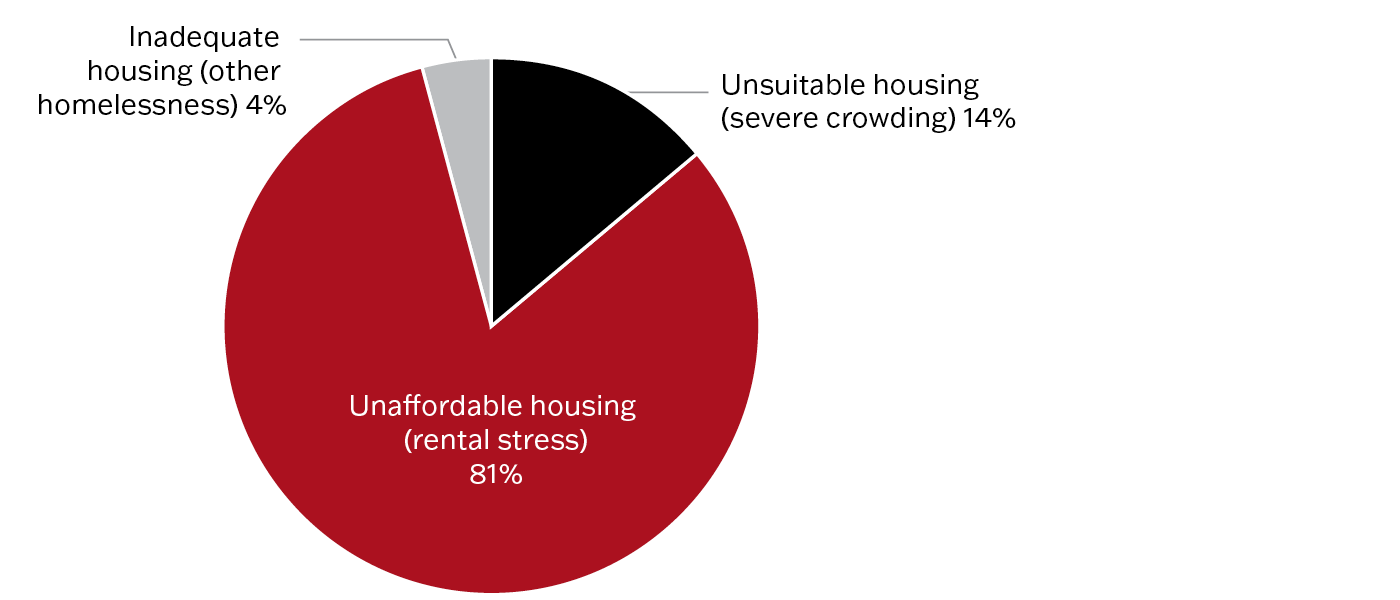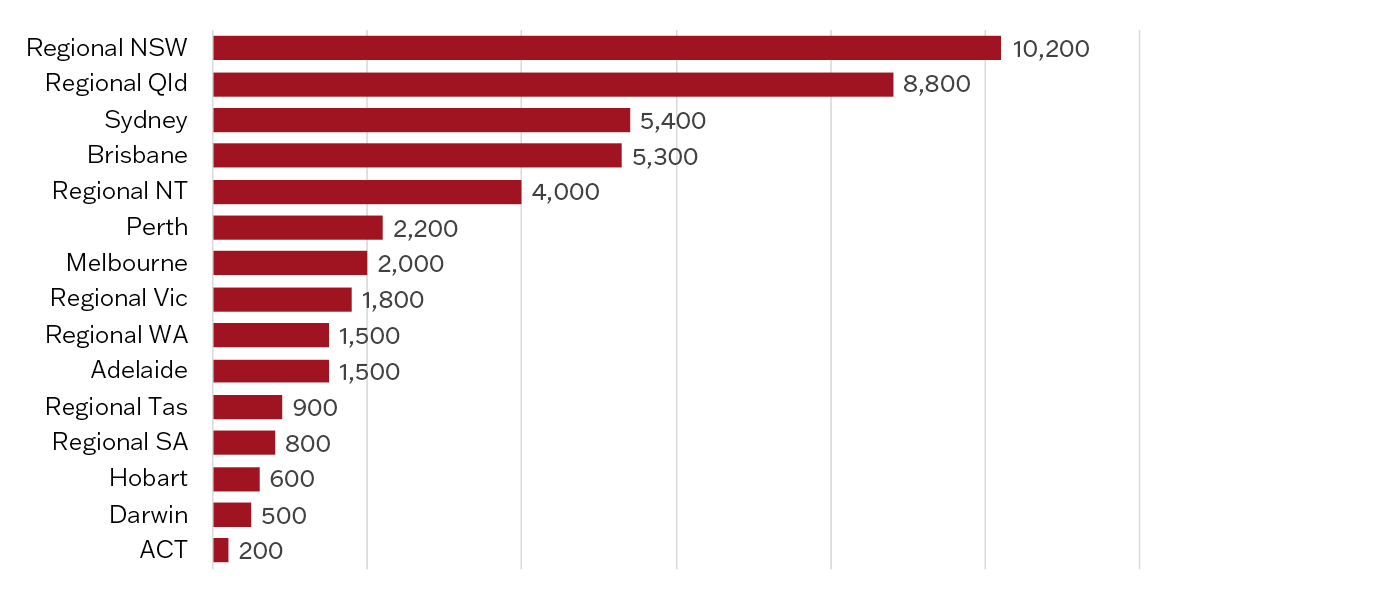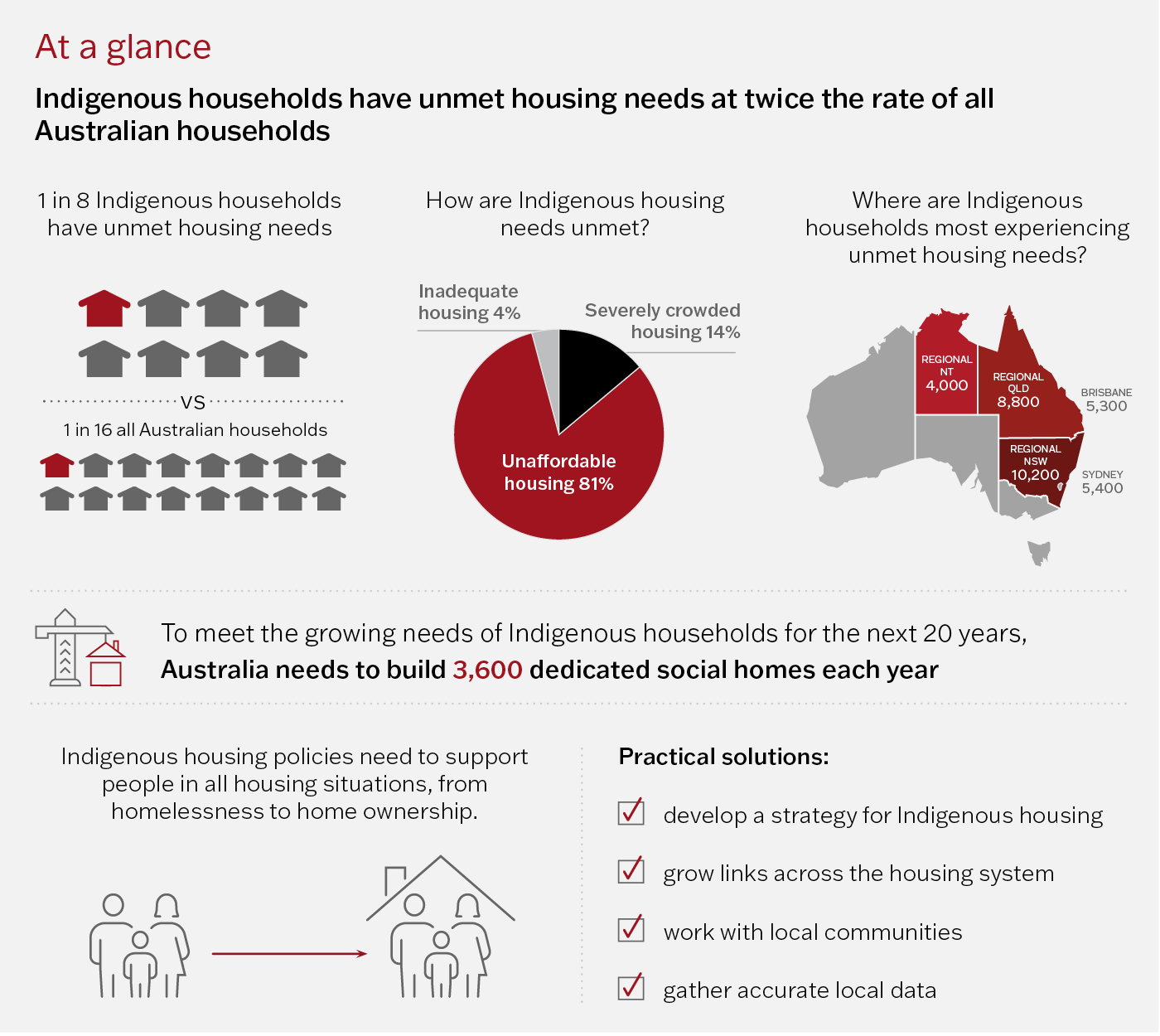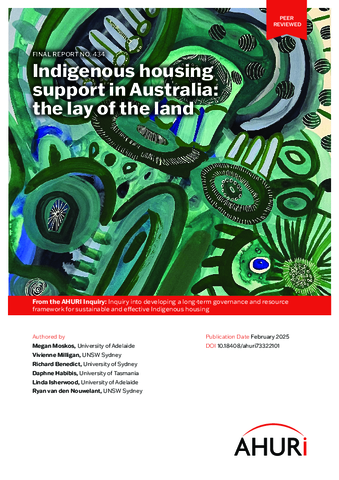From the AHURI Inquiry: Inquiry into developing a long-term governance and resource framework for sustainable and effective Indigenous housing
What this research is about
This research looked at how Indigenous housing is managed, funded and regulated in Australia. It looked at ways to support Indigenous Australians in making their own decisions about their housing.
This research report is part of the AHURI Inquiry into developing a long-term governance and resource framework for sustainable and effective Indigenous housing. The research uses the term ‘Indigenous’ to refer to both Aboriginal and Torres Strait Islander peoples of Australia.
Why this research is important
The research provides a comprehensive overview of the current Indigenous housing system in Australia.
Understanding Indigenous housing requirements is vital for developing future policies.
-
Infographic
-
Key findings
There is no national Indigenous housing strategy and only some states and territories have dedicated strategies. The Indigenous community-controlled housing sector has receded in most states, except New South Wales and Victoria.
Closing the Gap gives governments a target
'Closing the Gap' gives governments clear directions for shared decision-making and increased Indigenous control. However, its current targets for tackling housing disadvantage are narrow in scope and lack ambition.The Indigenous housing sector struggles to fund new housing due to its limited size, low rental income and few assets for securing loans.
Increase in the number of Indigenous households in the private housing market
In 2001 half of Indigenous households lived in the private sector. In 2021, over two-thirds of Indigenous households lived in the private sector as:- owners (14%)
- owners with a mortgage (28%)
- renting from a private landlord (28%).
Relying on private rental creates rental stress
The private rental sector is too expensive for Indigenous households earning very low incomes. Nearly 80% of Indigenous very low income renters experience rental stress.Social housing is still a key component of Indigenous housing
Appropriate and adequate social housing remains crucial despite decreasing from housing 32% of Indigenous households in 2001 to 18% in 2021. Currently, Indigenous members make up over 30% of new government-managed housing tenancies across Australia.Indigenous households have large unmet housing needs
Analysis of 2021 Census data revealed 45,700 Indigenous households couldn't meet their housing needs – about one in eight households, double the national rate for all Australian households.Most of Indigenous households’ unmet need comes from being in rental stress.
Figure 1: Drivers of unmet Indigenous housing need, 2021

Source: Author analysis of ABS
Note: The percentages in this figure to not sum to 100 due to rounding.
The areas with the greatest unmet need include New South Wales, Queensland and remote Australia.
Figure 2: Number of Indigenous households with unmet housing needs, 2021

Source: Author analysis of ABS
Indigenous housing needs to grow
To meet the projected need from low income Indigenous households over the next 20 years, an additional 3,600 dwellings per year will be needed. -
Policy actions
Areas for future policy focus include:
- create a national framework for Indigenous housing backed by solid research on what local communities need
- build partnerships with the private housing industry, educational institutions and non-Indigenous non-government organisations
- align Indigenous housing policies with 'Closing the Gap' to ensure the Indigenous community-controlled housing sector can develop consistently and grow sustainably.
Indigenous housing policies need to support all housing situations, from homelessness through to home ownership. This needs flexible funding and strong connections across different parts of the housing system.
Policy development must consider the different needs of Indigenous populations in both urban and remote areas. The resources allocated to any area should match the level of unmet need. Practical solutions should focus on working with local communities, gathering accurate local data and helping housing providers adapt their services as needed.
-
Research design
This research included a detailed literature review, an assessment of the current Indigenous housing system across Australia, an analysis of housing needs and interviews with government and Indigenous housing sector stakeholders.



